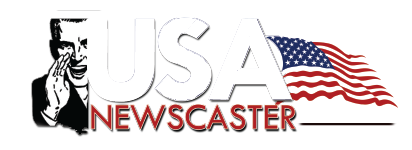Language translation transcends the mere conversion of words from one language to another; it serves as a critical conduit for making knowledge universally accessible, thereby fostering global educational equity. In today’s interconnected world, the ability to translate educational materials effectively can bridge substantial gaps in learning access, enabling a more inclusive and diversified approach to education across different cultures and regions. This article delves into the expansive role of language translation in education, exploring its transformative impacts, the technologies advancing its reach, and the inherent challenges faced in the process.
The Role of Language Translation in Education
Language translation is pivotal in education, serving as a key enabler for accessing a vast array of learning resources that would otherwise be restricted by language barriers. By translating textbooks, scholarly articles, and online educational content such as massive open online courses (MOOCs), knowledge democratization is significantly enhanced, allowing for a broader dissemination of learning opportunities. An exemplary initiative by UNESCO involves translating essential educational resources into multiple languages, significantly enhancing educational access in underprivileged areas.
Furthermore, translation facilitates international academic collaborations, allowing educators and scholars to share innovative teaching methodologies and research findings across borders. This global exchange is crucial in disciplines such as science and humanities, where the broad dissemination of research can spur global progress and foster comprehensive understanding across diverse academic communities.
Specific Benefits of Language Translation
The ability to translate educational materials offers numerous benefits, chief among them being the promotion of cross-cultural understanding and international cooperation. Through translation, students and educators gain access to diverse cultural perspectives, enhancing global awareness and fostering richer, more inclusive educational experiences.
Moreover, in the realm of scientific and academic knowledge dissemination, translation plays an indispensable role. For example, the translation of health and medical textbooks, particularly Spanish translations, into languages widely spoken in Latin America has dramatically improved the accessibility of educational resources, directly impacting public health education and outcomes.
“Translating Science,” a notable initiative, involves translating contemporary scientific research into multiple languages. This project has significantly expanded the reach of scientific discoveries, allowing non-English speaking researchers to participate actively in the global scientific dialogue, thus fostering widespread scientific literacy and innovation.
Technology in Language Translation
Technological advancements have brought about a revolution in language translation, particularly in the educational sector. Artificial intelligence (AI) and machine learning (ML) technologies now lead the way in enhancing the accuracy and efficiency of translations. These tools are capable of processing large volumes of complex academic texts, thereby facilitating the rapid availability of multilingual educational content.
AI and ML are not only pivotal in translating written content but also play a critical role in the real-time translation of audio and video lectures, which is invaluable in international educational collaborations and distance learning programs. This technological support is crucial for non-native speakers and contributes significantly to the inclusivity of global education initiatives.
Challenges and Solutions in Educational Translation
Despite its significant benefits, the field of educational translation faces numerous challenges. Key issues include maintaining the quality and accuracy of translations, where technical terminology, idiomatic expressions, and cultural nuances can complicate the translation process. Moreover, inaccuracies in translation can lead to misinterpretations, potentially resulting in misinformation, especially in critical disciplines such as law, medicine, and science.
Addressing these challenges requires a multifaceted approach. Employing skilled translators who specialize in specific academic fields is essential. Furthermore, the implementation of peer reviews and collaborative translation practices can help maintain the integrity and accuracy of translated educational content. Developing and utilizing discipline-specific glossaries and style guides can also aid in standardizing translations and minimizing inconsistencies.
Conclusion
The transformative role of language translation in education is undeniable, enabling the flow of knowledge across linguistic and cultural barriers and fostering a more connected and educated world. As technological advancements in translation continue to evolve, the potential to further expand educational opportunities becomes increasingly feasible. Encouraging continued investment and research in translation technologies and methodologies is essential for breaking down educational barriers and constructing bridges towards a more inclusive and accessible global learning environment.






